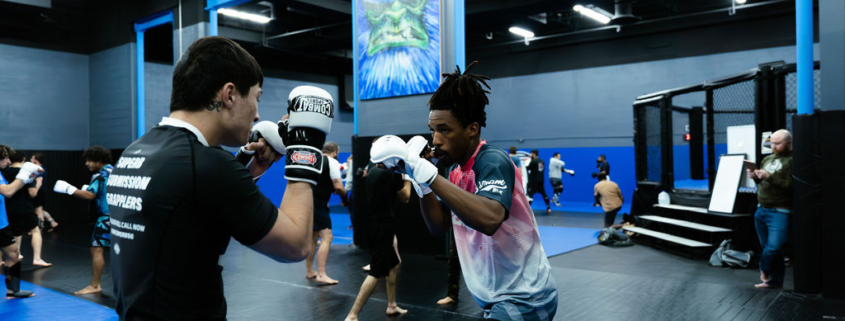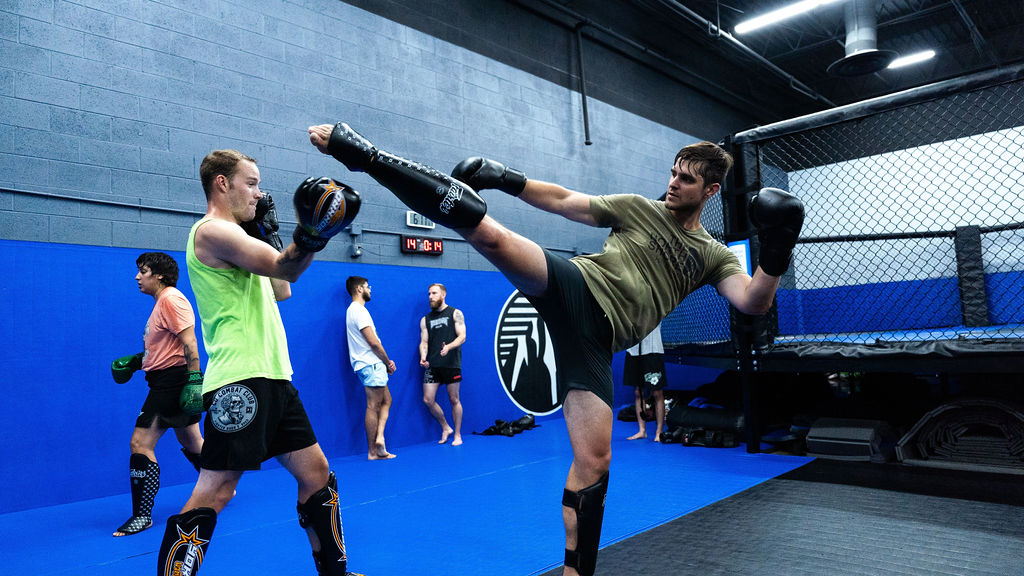When it comes to striking martial arts, Muay Thai and Kickboxing are two of the most popular disciplines. While they share similarities, their stances are distinct and optimized for their unique styles of combat. Understanding the key differences between these stances can help fighters refine their techniques and develop the right approach for their chosen discipline.
The Muay Thai Stance
Muay Thai, known as the Art of Eight Limbs, involves punches, kicks, elbows, and knee strikes. Because of this, the stance is designed to facilitate balanced movement, strong defense, and powerful clinching.
Key Characteristics of the Muay Thai Stance:
- More Upright Posture: Fighters stand with their torsos more vertical, allowing quick transitions between strikes, clinching, and defensive maneuvers.
- Weight Distribution: More weight is placed on the back leg, keeping the front leg light for quick checks (blocking kicks) and teeps (push kicks).
- Feet Positioning: Feet are usually shoulder-width apart, with the front foot slightly pointing forward and the back foot at a slight angle.
- High Guard: Hands are kept high with elbows tucked in, providing protection against strikes and allowing for elbow attacks.
- Minimal Head Movement: Unlike Western boxing, Muay Thai fighters don’t rely heavily on head movement, as dodging low kicks or knees is difficult.
Advantages of the Muay Thai Stance:
- Strong defense against kicks and knees
- Ideal for clinching and close-range strikes
- Effective for blocking low kicks with quick checks
- Balanced posture for powerful roundhouse kicks
Challenges of the Muay Thai Stance:
- Less lateral movement, making it harder to evade punches
- Less emphasis on head movement, making it vulnerable to boxers
Slower footwork compared to Kickboxing
The Kickboxing Stance
Kickboxing incorporates elements of boxing and karate, focusing on punches and kicks but without elbow and knee strikes. The stance is more dynamic and mobile, making it well-suited for rapid footwork and defensive evasions.
Key Characteristics of the Kickboxing Stance:
- Lower, More Bladed Stance: The body is angled slightly sideways (similar to a boxing stance), reducing the target area and allowing for better movement.
- Weight Distribution: More evenly distributed between both legs, which aids in quick movement, pivots, and explosive strikes.
- Feet Positioning: The back foot is slightly further behind than in Muay Thai, allowing for stronger pivoting on punches and kicks.
- Hands Positioned Lower: While still guarding the head, kickboxers often keep their hands slightly lower than Muay Thai fighters, allowing for quicker counterattacks.
- Active Head Movement: Head movement and footwork are emphasized to slip punches and avoid strikes.
Advantages of the Kickboxing Stance:
- Greater mobility and lateral movement
- Better head movement and evasive maneuvers
- More fluid punching combinations
- Strong emphasis on angles and counters
Challenges of the Kickboxing Stance:
- Less effective at blocking low kicks and checking kicks
- Less emphasis on clinch work
- Weaker defense against knee and elbow strikes
Which Stance is Better?
The best stance depends on your fighting style and what techniques you prioritize.
- If you want strong defense, powerful kicks, and clinch work, the Muay Thai stance is ideal.
- If you prefer quick movement, head movement, and punch-heavy combinations, the Kickboxing stance may be better suited for you.
Many modern fighters blend elements of both stances, adjusting their posture based on their opponent. For example, MMA fighters often modify their stance to incorporate both Muay Thai defense and Kickboxing mobility.
Both Muay Thai and Kickboxing stances have their strengths and weaknesses, and choosing the right one depends on your preferred fighting style. If you’re training in Muay Thai, focus on balance, blocking kicks, and clinching. If you’re training in Kickboxing, work on footwork, angles, and head movement. Regardless of your choice, mastering the stance is crucial for developing an effective striking game.
Would you prefer to train with the power and durability of Muay Thai or the speed and agility of Kickboxing? Let us know your thoughts!






